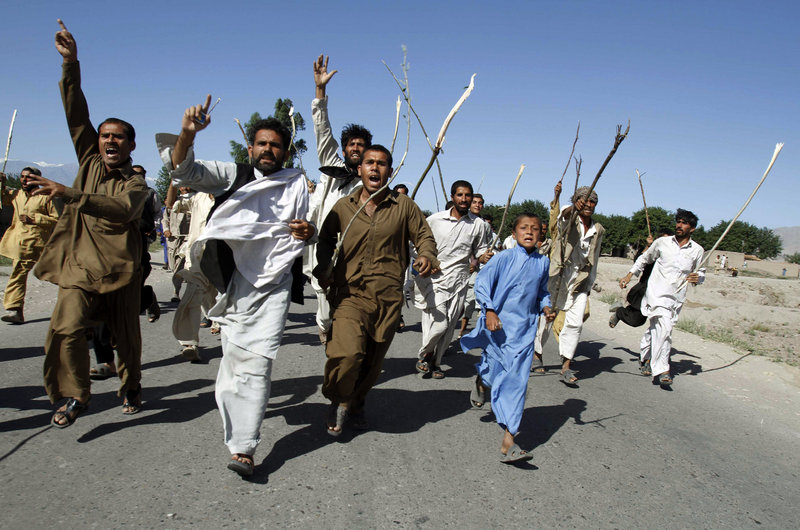– Tribune Washington Bureau
WASHINGTON – In the view of many U.S. officials, Afghan President Hamid Karzai has been a reluctant commander-in-chief, hesitant to take a direct role in the military fight against the Taliban insurgency. But during his visit to the U.S. this week, American officials have been trying to play up Karzai’s position as a wartime leader.
U.S. officials noted repeatedly that he gave his approval for this year’s military operation in Marja and is helping to plan an upcoming mission in Kandahar.
They accompanied him on visits to Arlington National Cemetery and Walter Reed Army Medical Center.
On Friday, Karzai capped his U.S. visit with a trip to Fort Campbell, Ky., to meet with U.S. soldiers from the 101st Airborne Division, who are about to deploy to Afghanistan.
Reporters were not allowed into Karzai’s meetings with soldiers. Maj. Gen. John F. Campbell, commander of the 101st Airborne, said Karzai chose to visit his troops because of their key role in the next six to 12 months in Afghanistan.
Campbell said Karzai thanked troops and their families for their service in his country and met briefly with soldiers from the division’s 2nd Brigade Combat Team, who were leaving Friday to deploy to Kandahar province.
Karzai’s U.S. trip was intended in large part to help ease strains with Washington after months of pressure from the Obama administration to tackle corruption, ultimately prompting Karzai’s suggestion that he might join with the Taliban.
Both sides came away this week with apparent gains. Karzai was given U.S. pledges to avoid civilian casualties, and promises of long-term strategic ties. Obama got assurances that Karzai would work to improve his government and to back the effort in Kandahar.
If there were any major disagreements during the White House meetings, the Obama and Karzai governments succeeded at keeping them quiet.
Raising Karzai’s profile as a leader of military operations in his country was a U.S. objective, intended to improve his standing among both Afghans and Americans and to get him more invested in the war effort.
The top U.S. and allied commander, Gen. Stanley McChrystal, went so far as to suggest Karzai was one of his bosses.
“As a military commander, I think of him as a wartime leader for whom, essentially, I work,” McChrystal said on PBS.
With pictures of Karzai kneeling before the grave of a fallen soldier and shaking hands with troops preparing to deploy, the Afghan president presented himself as appreciative of U.S. sacrifices.
“He is learning how to be an American-style commander-in-chief,” said John A. Nagl, the president of the Center for a New American Security. “The critical variable in whether we succeed or fail in Afghanistan is the support of the American people.”
Copy the Story Link
Send questions/comments to the editors.



Success. Please wait for the page to reload. If the page does not reload within 5 seconds, please refresh the page.
Enter your email and password to access comments.
Hi, to comment on stories you must . This profile is in addition to your subscription and website login.
Already have a commenting profile? .
Invalid username/password.
Please check your email to confirm and complete your registration.
Only subscribers are eligible to post comments. Please subscribe or login first for digital access. Here’s why.
Use the form below to reset your password. When you've submitted your account email, we will send an email with a reset code.